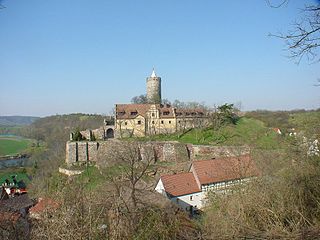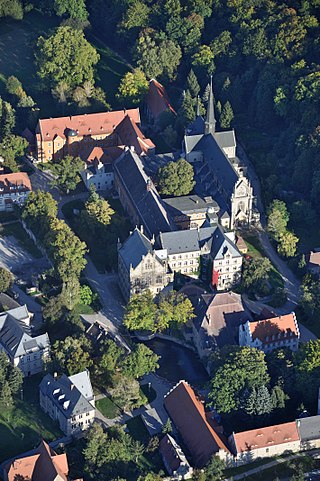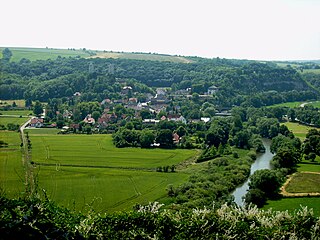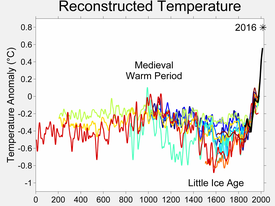
Baltic Germans are ethnic German inhabitants of the eastern shores of the Baltic Sea, in what today are Estonia and Latvia. Since their resettlement in 1945 after the end of World War II, Baltic Germans have markedly declined as a geographically determined ethnic group in the region.

Drang nach Osten was the name for a 19th-century German nationalist intent to expand Germany into Slavic territories of Central and Eastern Europe. In some historical discourse, Drang nach Osten combines historical German settlement in Central and Eastern Europe, medieval military expeditions such as those of the Teutonic Knights, and Germanisation policies and warfare of modern German states such as those that implemented Nazism's concept of Lebensraum.

The Transylvanian Saxons are a people of mainly German ethnicity and overall Germanic origin; mostly Luxembourgish and from the Low Countries initially during the medieval Ostsiedlung process, then also from other parts of present-day Germany who settled in Transylvania in various waves, starting from the mid and mid-late 12th century until the mid 19th century.

Medieval demography is the study of human demography in Europe and the Mediterranean during the Middle Ages. It estimates and seeks to explain the number of people who were alive during the Medieval period, population trends, life expectancy, family structure, and related issues. Demography is considered a crucial element of historical change throughout the Middle Ages.

Luxembourgers are an ethnic group native to their nation state of Luxembourg, where they make up around half of the population. They share the culture of Luxembourg and speak Luxembourgish, a West Germanic language.

The Zipser Germans, Zipser Saxons, or, simply, just Zipsers are a German-speaking sub-ethnic group in Central-Eastern Europe and national minority in both Slovakia and Romania. Along with the Sudeten Germans, the Zipser Germans were one of the two most important ethnic German groups in the former Czechoslovakia. An occasional variation of their name as 'Tzipsers' can also be found in academic articles. Former Slovak President Rudolf Schuster is partly Zipser German and grew up in Medzev.

Freyburg is a town in the Burgenlandkreis district, in Saxony-Anhalt, Germany. It is situated on the river Unstrut, 9 km northwest of Hanseatic Naumburg, 63 km from Leipzig and 231 km from Berlin. It is part of the Verwaltungsgemeinschaft Unstruttal. On 1 July 2009 it absorbed the former municipalities Pödelist, Schleberoda, Weischütz and Zeuchfeld. Freyburg consists of the Ortsteile (divisions) Dobichau, Freyburg, Nißmitz, Pödelist, Schleberoda, Weischütz, Zeuchfeld and Zscheiplitz.
The presence of German-speaking populations in Central and Eastern Europe is rooted in centuries of history, with the settling in northeastern Europe of Germanic peoples predating even the founding of the Roman Empire. The presence of independent German states in the region, and later the German Empire as well as other multi-ethnic countries with German-speaking minorities, such as Hungary, Poland, Imperial Russia, etc., demonstrates the extent and duration of German-speaking settlements.
Ebersroda is a village and a former municipality in the Burgenlandkreis district, in Saxony-Anhalt, Germany. Since 1 July 2009, it is part of the municipality Gleina.
Schleberoda is a village and a former municipality in the Burgenlandkreis district, in Saxony-Anhalt, Germany. Since 1 July 2009, it has been part of the town Freyburg.

The history of Germans in Poland dates back almost a millennium. Poland was at one point Europe's most multiethnic state during the medieval period. Its territory covered an immense plain with no natural boundaries, with a thinly scattered population of many ethnic groups, including the Poles themselves, Germans in the cities of West Prussia, and Ruthenians in Lithuania. 5 to 10% of immigrants were German settlers.

Ostsiedlung is the term for the Early Medieval and High Medieval migration of ethnic Germans into the territories in the eastern part of Francia, East Francia, and the Holy Roman Empire and beyond; and the consequences for settlement development and social structures in the areas of settlement. Generally sparsely and in some inland areas only relatively recently populated by Slavic, Baltic and Finnic peoples, the most settled area was known as Germania Slavica. Other regions were also settled, though not as heavily. The Ostsiedlung encompassed multiple modern and historical regions such as Germany east of the Saale and Elbe rivers, the states of Lower Austria and Styria in Austria, Livonia, Poland, the Czech Republic, Slovakia, Slovenia, Hungary, and Transylvania in Romania.

The Naumburg Cathedral and the High Medieval Cultural Landscape of the Rivers Saale and Unstrut is situated in the state of Saxony-Anhalt, Germany. Naumburg Cathedral and the surrounding cultural landscape were proposed by Germany as a World Heritage Site. On July 1, 2018, only Naumburg Cathedral was designated by UNESCO as a World Heritage Site. This article discusses the cathedral and its cultural landscape based on the submissions in 1998 (cathedral) and 2005.

Schönburg Castle, is in the municipality of Schönburg, Saxony-Anhalt, Germany. It has been proposed by Germany as a World Heritage Site.
Goseck, a monastery built on the foundations of a castle, as well as the vineyard of Dechantenberg is located in the municipality of Goseck of Saxony-Anhalt in Germany. It has been proposed by Germany for inscription in the List of World Heritage. The World Heritage nomination Naumburg Cathedral and the High Medieval Cultural Landscape of the Rivers Saale and Unstrut is a representative of the processes that shaped the continent during the High Middle Ages between 1000 and 1300: Christianization, the so-called "Landesausbau" and the dynamics of cultural exchange and transfer characteristic for this very period.

The Pforta monastery is a former Cistercian monastery located near Naumburg in Saxony-Anhalt, Germany. It was established in the 1130s and prospered in the Middle Ages. In the course of the Reformation the monastery was disbanded in 1540. Today the buildings are used by the school Landesschule Pforta. The site is located on the tourist route Romanesque Road and has been nominated by Germany for inclusion in the UNESCO list of World Heritage Sites.
The village of Großwilsdorf and the Rödel Plateau are situated in Saxony-Anhalt in the middle of Germany. It has been proposed by Germany as a World Heritage Site. The World Heritage nomination Naumburg Cathedral and the High Medieval Cultural Landscape of the Rivers Saale and Unstrut is representative for the processes that shaped the continent during the High Middle Ages between 1000 and 1300: Christianization, the so-called Landesausbau and the dynamics of cultural exchange and transfer characteristic for this very period.

Saaleck is a village in the former municipality of Bad Kösen, since 2010 part of the town of Naumburg in the district of Burgenlandkreis in the German state of Saxony-Anhalt.

Kleinjena is situated 4 kilometres north of Naumburg on a long spur at the foot of the Finne mountain range above the village of Kleinjena, at the heart of Federal Republic of Germany in the State of Saxony-Anhalt. It has been proposed by Germany for inscription in the List of World Heritage. The World Heritage nomination is representative for the processes that shaped the continent during the High Middle Ages between 1000 and 1300: Christianization, the so-called "Landesausbau" and the dynamics of cultural exchange and transfer characteristic for this very period.
The village of Flemmingen is one of the eleven components of the cultural landscape Naumburg Cathedral and the High Medieval Cultural Landscape of the Rivers Saale and Unstrut that has been proposed by the Federal Republic of Germany for inscription in the List of World Heritage. The World Heritage nomination is representative for the processes that shaped the continent during the High Middle Ages between 1000 and 1300: Christianization, the so-called “Landesausbau” and the dynamics of cultural exchange and transfer characteristic for this very period.















